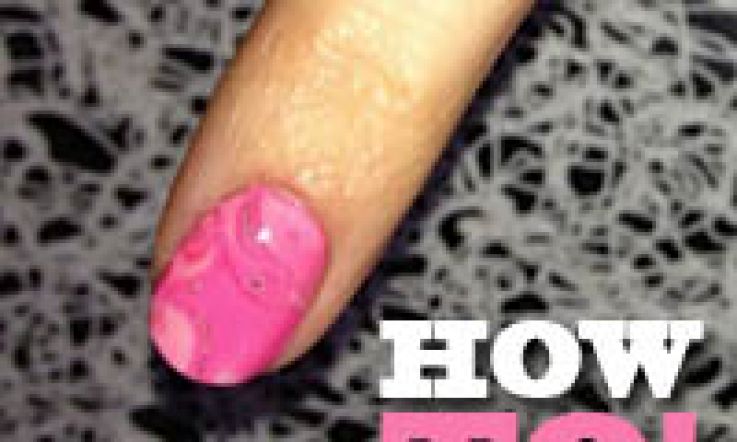Beaut.ie How To: Dry Water Marbling Is Easy and Much Quicker!

If you haven't heard of water marbling for nails before now, consider yourself lucky. The process involves dripping different shades of polish onto water, swirling them around with a toothpick to create a pattern, and then pressing a nail onto the surface to pick up part of the marbled design before starting again and repeating the procedure for the other nine nails.
Water marbling has loads of enthusiastic fans among the beauty blogging community but I for one am stumped by its popularity. It's fiddly, it's time consuming, it involves a lot of trial and error to figure out which polish brands and colours will work best, and it is messy. Clean-up (even if you use Vaseline, oil, or tape to protect the skin around and underneath the nails) is a complete freaking nightmare.
It is possible to get the look of water marbling without the mess, though, using the magic of Ziploc sandwich bags.
Yes. Really.
This technique is called dry water marbling, and I've been meaning to take a crack at it since seeing it on More Nail Polish months ago.
How To: Dry Water Marbling
Advertisement
1. Fill a cup with water
2. Cut a piece of plastic that fits neatly into the mouth of the cup from a Ziploc bag.
3. Drop your chosen colours into the centre of the water one by one; you should end up with a load of concentric circles.
4. Use the tip of a toothpick or similar to gently, lightly, drag and swirl the polishes.
Advertisement
5. Immediately lay your piece of plastic on the surface of the water/nail polish combo. The nail polish pattern should cling to the plastic, allowing you to lift it out of the water.
6. Allow it to dry completely then use a sharp scissors to cut out the pieces of the pattern that you want to use. For full nail coverage, these pieces should be a little bigger than your own nails.
7. Paint nails, allow to dry for a couple of minutes
8. Firmly press the cut-outs onto nails (polish side down), and quickly remove the plastic Ziploc backing. The design should adhere to the damp polish.
9. Remove excess by using a clean toothpick or cuticle pusher to gently ease it away from the skin around the nail. Clean up any remaining untidy edges using a cotton bud or small brush dipped in nail polish remover (or a nail polish corrector pen.) Finish with top coat.
Tips:
- For best results, water and polishes should be at room temperature. You can also try warming the water a little in the microwave before you begin
- Working quickly is the key to success with this manicure, so have all your polishes/tools close to hand and open, ready to use before you get started
- Thin nail polishes work better for water marbling (wet or dry!) than thick, gloopy polishes
- Drip polishes onto the water from just above the water's surface; dripping them in from a height can cause them to sink
- When swirling the polishes, start in the centre and pull them outwards
Still not exactly fuss-free, but what do you reckon? Would you give dry water marbling a whirl?